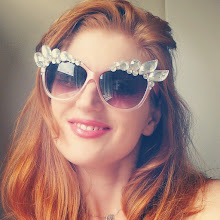[Image sourced from AllWalks]
I recently read an article called Bodies Talk by Caryn Franklin, the founder of All Walks Beyond The Catwalk which I'd grabbed from i-D magazine 2010, The head, the shoulders, knees and toes issue, pages 130- 131.
All Walks is a fascinating initiative, that I will dig deeper into for a separate blog post, but I just wanted to share some of what I perceived as 'truths' that spoke to me from this particular piece of writing.
This article, written during London Fashion Week 2012, targets how the fashion industry is an indicator of social change and dialogue with innovative designs and forward thinking, yet has such a retrograde representation of the human body.
Interestingly the ideals of modern society have this attraction to what is essentially an unhealthy weight for a woman, directly opposes subconcious biological genetic processes in the male brain for the purposes of evolution to choose a healthy female partner.
The article critiques the industry as "The Authority On The Way Clothes Look Best" for knowingly having a huge psychological impact on women, yet doing little to influence positive body image ideals and self esteem.
According to the article, whether the consumer is an intelligent self actualised woman or pre-teen (i.e intelligence, age, etc) has little relevance on the ability to think logically. When presented with fashion advertisments, the visuals impact the psyche on a subconscious level and the consumer cannot make a separation between the clothes and the body. This brings up a concept I have already spoken about in this blog about the goal of advertising in general being to make the consumer desire the product by feeling their own lifestyle to be inferior or as Caryn puts it "rectifying a Hopelessly Imperfect Existence with unnecessary purchases". There is little ability for us to think critically of images 'Gee, I wish I looked like her, maybe I should get that dress - hang on, even she doesn't look like that!', because "institutionalised body dysmorphia is a default setting for all of us".
Another issue I've spoken about before - airbrushing, is touched on in this article too. It basically says that the result of the manipulation of images means what is achieved is all the tiny things that make one body unique to another one are gone, and therefore we have "a repetition of the same unachieveable thing over and over and while we become more disoriented and miserable, the large corporate benefits." What happaed to beauty in the individual, the difference, the 'otherness'?
And this is not limited to the size of models. The scarcity of varying ethnic models on catwalk and fashion visuals could explain why Caucasion women suffer lower levels of self esteem than darker skinned women - as a white woman we're constantly being presented with images of what we "should" look like.
The article asks of fashion, "what if the entire industry lead the way in acknowedging what a powerful force it in in communicating to woman about their bodies, more powerful than music, sport, art and film put together, and Actually Did Something About It?" Obviously because of profit loss, established companies cannot afford to change their images now without risking a loss, so, as the article points out, it has to start within Fashion Educational Institutions, so that the next generation of designers/ creative directors/ stylists/ photographers/ etc are hell bent on promoting a revolutionary change in the industry and in the world of body image mental health.
Not to criticise my design degree, because I understand that we have a limited amount of resources within this degree. But the Womenswear fashion major students were told to aim to a size 9 model, because size 8 is a little on the underweight side and that's not what UTS wants to promote, and the models in the Graduate Show will be turned away if they are underweight. Well, firstly, I was at last year's fashion graduate show, and I did think there were a fair few unhealthy models included in the catwalk. Plus, we're constantly being told "Don't design for yourself, design for the market that's out there". I think the average Australian Woman is a size 12-14, so there is a certain irony to catering to the market by only creating clothes that look good on people who already look good. Using a size 9-10 model probably keeps you in the realm of a fairly healthy body, but we're still going for the thinnest possible ideal in the healthy range, which is not really a representation of the real world.
The industry may think that advertising their clothing on the most beautiful models they can find, is promoting their clothes in the best light. Well, studies show people would be more likely to buy clothes if they see them on a person who vaguely resembles them - age, size, ethnicity. Only, if they tried say, using a model for a photoshoot who's a size 14, they might discover that after grading to the size and essentially trying to fit that design to a larger person, well it distorts the original intention of the garment. So maybe we should have designers who start draping on size 12 or 14 mannequins - why should someone within the range of a healthy weight have to go to "plus size" stores to find clothing specifically designed for their body shape?
I liked this article. And I find myself constantly being highly critical of everything the fashion industry stands for. Well, also in our lecture this morning we were told industry members were excited about designers with ideas that could change their industry. Maybe I'm not as lost as I think I am.
[Image sourced from AllWalks]

No comments:
Post a Comment